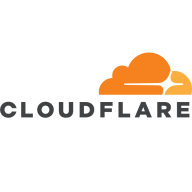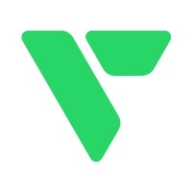


Amazon CloudFront and Link11 compete in the content delivery and security market. Based on the features, Amazon CloudFront has the upper hand due to its seamless integration with AWS services.
Features: Amazon CloudFront is renowned for its fast global content delivery with numerous edge locations reducing latency. It integrates efficiently with AWS and offers comprehensive security features including DDoS protection. Users find CloudFront easy to configure and use. Link11 excels with its real-time monitoring, advanced security measures, and highly effective DDoS mitigation capabilities.
Room for Improvement: Amazon CloudFront can enhance its edge locations in Asia-Pacific and optimize its pricing model. Improvements in setup complexity and documentation support are needed. Link11 could enhance its WAF rules granularity and simplify rule creation workflows. Making the interface more intuitive for non-security users is also required. Both need better customer support and clearer documentation.
Ease of Deployment and Customer Service: Amazon CloudFront supports Public, Hybrid, and Private Clouds, offering versatile deployment options. Customer service feedback is mixed, with concerns over delayed responses. Link11 provides similar deployment capabilities with generally prompt support, though some users experience difficulties finding useful documentation. Both could benefit from more responsive support and clearer documentation.
Pricing and ROI: Amazon CloudFront offers a pay-as-you-go model with a generous free tier, appealing to cost-conscious users, especially SMEs. Some users find its pricing complexity challenging. Link11 provides straightforward pricing with potential for negotiation. Both services demonstrate strong ROI, but CloudFront’s scalable cost model makes it attractive for global delivery and cost-sensitive sectors like non-profits.
WordPress security can be tricky, and that's where Cloudflare can be absolutely helpful for small businesses.
For the small project I was working on, using the basic tier provided a huge improvement at zero cost.
In terms of return on investment with Cloudflare, it costs my time to set them up, but basically once they're set up, it's done.
This would help us address issues promptly, especially during unforeseen events like DDoS attacks.
Cloudflare does not offer hands-on technical support to fix customer problems but rather a self-service model.
The key factor is the language in which the support is offered, which, in this case, is in Thai.
It is a SaaS tool, but the fact that they have workloads deployed across the world proves that it is a highly scalable tool.
The tool offers very good performance, even during high-traffic periods.
I rate the solution’s scalability an eight out of ten.
For DDoS protection, I would not recommend Cloudflare.
I rate the solution’s stability an eight out of ten.
The service is very stable with no impacts during high-traffic periods.
If Amazon CloudFront is present, it will decrease latency; if it is not, then latency would be slightly greater, but it would still work.
There's a need for improvement in areas like AI-based DDoS attacks and Layer 7 WAF features.
Despite these challenges, overall, Cloudflare remains the preferred solution compared to Azure, AWS CloudFront, and Google Cloud Armor.
The timing aspect can lead to it being considered overpriced. This is a particular concern we have with Cloudflare, as they may struggle with accurately detecting the client.
The pricing for Amazon CloudFront is quite expensive; I would rate it six if we use all edges.
That's where Cloudflare shines for smaller businesses – it's ten times cheaper than Akamai.
I find it to be cheap.
I think they should consider reevaluating the pricing for support, as it can be quite high.
The most valuable features of the solution are performance and security.
Techniques like minification and image compression reduce the size of assets, leading to better performance and faster user load times.
The solution has been able to compare it to the market, and I think the product has taken great strides in automating quite a bit of things, and they use a lot of AI.
It drastically reduces latency, which is very useful for web performance and user experience.
| Product | Market Share (%) |
|---|---|
| Cloudflare | 21.1% |
| Amazon CloudFront | 7.0% |
| Link11 | 1.5% |
| Other | 70.4% |


| Company Size | Count |
|---|---|
| Small Business | 46 |
| Midsize Enterprise | 8 |
| Large Enterprise | 25 |
| Company Size | Count |
|---|---|
| Small Business | 21 |
| Midsize Enterprise | 4 |
| Large Enterprise | 15 |
| Company Size | Count |
|---|---|
| Small Business | 4 |
| Midsize Enterprise | 3 |
| Large Enterprise | 2 |
Cloudflare is a highly-regarded Content Delivery Network (CDN) and a Distributed Denial-of-Service (DDoS) protection solution. The robust global connectivity cloud platform that is Cloudflare ensures users are able to connect to the Internet quickly, securely, and reliably. Cloudflare is one of the world's largest networks in the marketplace today. Using Cloudflare, businesses, educational entities, NGOs, vloggers, bloggers, and anyone else with an internet presence can experience more secure, faster websites and applications.
Currently, there are millions of Internet locations on Cloudflare, and the Cloudflare network
continues to grow every day by the thousands. The solution is able to fulfill the requests for
millions of websites seamlessly and serves on average 45 million HTTP requests per second.
Cloudflare has safe, secure data centers in close to 300 cities worldwide to ensure every
client request is filled as quickly as possible. It is Cloudflare’s edge network that makes this
possible by keeping content and other services as close to each client as possible, so the
information requests are always only seconds away.
Many organizations that work in democracy, civil society, human rights, or the arts are able to
access Cloudflare's highest levels of protection for free via Project Galileo. Additionally, official
election websites can be secured from hacking and fraud through Cloudflare’s Project
Athenian, also at no additional cost.
Cloudflare can also help organizations of all sizes develop a robust zero-trust strategy to
ensure the highest levels of productivity and profitability. Employees, stakeholders, and end users have a greater level of satisfaction and overall improved user experience, which can, in
turn, result in higher revenues and overall ROI. Zero-trust and BYOD (bring your own device)
access ensure end users and employees always have the best resources and technology
available to them at all times.
Cloudflare benefits
Cloudflare has many benefits. Some of its most valuable benefits include:
- Faster load times
- Robust DNS security
- Intuitive cloud Web Application Firewall (WAF)
- Free universal SSL
- Image enhancement
- Automatic browser caching
- Next-generation cloud load balancer
- Accelerated Mobile Pages (AMP)
- Rate limiting
- Minification
- Zero-trust capabilities
- Cost-effective
- Reduced carbon footprint
Reviews from real users
“Many websites require an SSL certificate because they sell stuff and want SSL. Cloudflare
comes with an SSL certificate built in. It's automatic. You sign yourself up for Cloudflare, and
an SSL certificate automatically protects your website. If you have a connection between your
website and your host, the server, Cloudflare, and the host, you don't necessarily need a
certificate.” Spencer M., Owner at Tech Exchange
“What I like best about Cloudflare is that my company can use it to trace and manage
applications and monitor traffic. The solution tells you if there's a spike in traffic. Cloudflare
also sends you a link to check your equipment and deployment and track it through peering,
so it's a valuable tool.” Daniel P., Network Engineer at Ufinet
“The most valuable feature of Cloudflare is the GUI. You are able to control the solution very
well through the interface. There is a lot of functionality that is embedded in the service.” PeerSpot user, Competence Center Manager at a tech services company
Amazon CloudFront is a global content delivery network (CDN) service that accelerates delivery of your websites, APIs, video content or other web assets. It integrates with other Amazon Web Services products to give developers and businesses an easy way to accelerate content to end users with no minimum usage commitments. Amazon CloudFront can be used to deliver your entire website, including dynamic, static, streaming, and interactive content using a global network of edge locations. Requests for your content are automatically routed to the nearest edge location, so content is delivered with the best possible performance. Amazon CloudFront is optimized to work with other Amazon Web Services, like Amazon Simple Storage Service (Amazon S3), Amazon Elastic Compute Cloud (Amazon EC2), Amazon Elastic Load Balancing, and Amazon Route 53. Amazon CloudFront also works seamlessly with any non-AWS origin server, which stores the original, definitive versions of your files. Like other Amazon Web Services products, there are no long-term contracts or minimum monthly usage commitments for using Amazon CloudFront – you pay only for as much or as little content as you actually deliver through the content delivery service.
Link11, headquartered in Germany, offers cloud-based IT security services designed to prevent business disruptions, enhancing cyber resilience for IT networks and critical applications globally. Their services benefit industries across Europe, North America, and Asia with comprehensive protection.
Link11 provides a range of security and performance solutions, including Network Security, Web Application & API Protection, and Application Performance solutions. Their offerings encompass Network DDoS protection and an all-in-one WAAP solution, featuring Web Application Firewall, Web DDoS Protection, Bot Management, API Protection, and Secure CDN & DNS. A high-performance global network, monitored 24/7 by the Link11 Security Operations Center, ensures robust defense mechanisms.
What are the key features of Link11?Link11 is suited for industries wanting to protect web applications against Layer 7 DDoS attacks, cross-site scripting, SQL injection, and phishing attempts. Deployed on cloud models, Link11 integrates as a fundamental security layer, offering effective bot management and securing websites with multiple technologies.
We monitor all CDN reviews to prevent fraudulent reviews and keep review quality high. We do not post reviews by company employees or direct competitors. We validate each review for authenticity via cross-reference with LinkedIn, and personal follow-up with the reviewer when necessary.